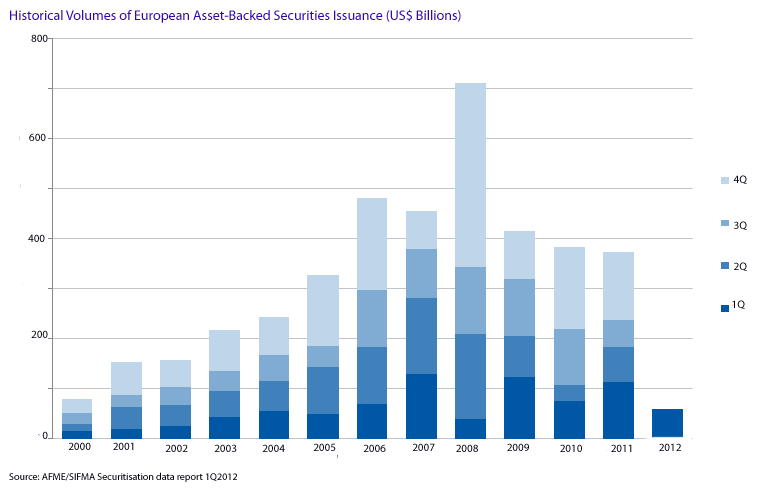European ABS and Repo Markets: From Evil to Blessing?
Abstract
European ABS and repos have followed different evolutionary paths during the 2007-2008 crisis and beyond. The European ABS sector is desperately looking for the light at the end of the tunnel, declining from over €700 billion issued in 2008 to less than €60 billion issued in Q1 2012. After a peak of €6,775 billion in outstanding business in June 2007 and a trough in December 2008 below €5,000 billion, the European repo market is flourishing again, with December 2011 levels well above €6,200 billion.
In a new report, European ABS and Repo Markets: From Evil to Blessing? Celent analyses the divergent paths of the ABS and repo markets since 2007, examining why one is dying while the other is thawing. The report examines the market structure, various European regulations that they will have to adapt to, and their future evolution.

“Apart from the changes in market structure that could take place, the main issue that needs to be resolved is a macro one,” says Joséphine de Chazournes, Senior Analyst with Celent’s Securities & Investments group and author of the report. “European regulators seem overly focused on the safety of the banks. It seems that the need to revive European economies comes second to this, but we believe it should not be overlooked. Securitisation could play a big role in this.”

